Find the safest and healthiest electric kettle for your home to ensure a worry-free boiling experience.
Choosing the perfect electric kettle goes beyond just boiling water. In this comprehensive guide, we delve into the essential factors to consider before purchasing an electric kettle.
SAFETY
Safety measures when buying an electric kettle are crucial to prevent accidents like burns, electric shocks, and fires, while also ensuring that the materials used are food-grade safe, guaranteeing the healthiness of your beverages.
Food Grade Interior Boiler
When selecting an electric kettle, it’s important to choose materials that do not leach harmful chemicals into beverages and are non-reactive with acidic or alkaline foods. Common food-grade options for electric kettle include: Stainless Steel 304 or 316, Borosilicate Glass, BPA-Free Plastic.
SS 304 or 316: Stainless steel, particularly 304 or 316 grade, is resistant to rust, corrosion, and staining, ensuring no harmful chemicals leach into the water.
Borosilicate Glass: Glass, especially borosilicate, is non-toxic and doesn’t leach chemicals, providing a pure taste. However, electric glass kettles typically have a stainless steel bottom with a joint that may involve adhesives, raising concerns about the long-term safety of these adhesives, as not all brands specify if they are food-grade.
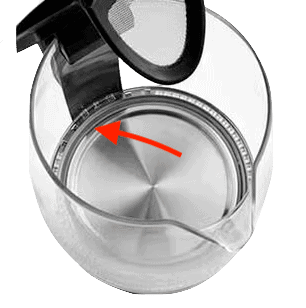
Caution:BPA-Free Plastic: While some may consider BPA-free plastic as an ideal food-grade material, studies indicate that BPA-free plastics can contain substitutes that are just as harmful as BPA.
While both stainless steel and borosilicate glass are safe options for electric kettles, stainless steel emerges as the healthier choice due to its superior durability and absence of adhesive concerns, making it the best option for long-term safety.
Avoid Direct Plastic Contact
Electric kettles sometimes include plastic parts like water level indicators, lid underside and strainers, which can leach harmful chemicals into beverages over time. To ensure safety, choose kettles with grooved water level indicators inside, stainless steel lid underside and strainers, avoiding direct plastic contact.
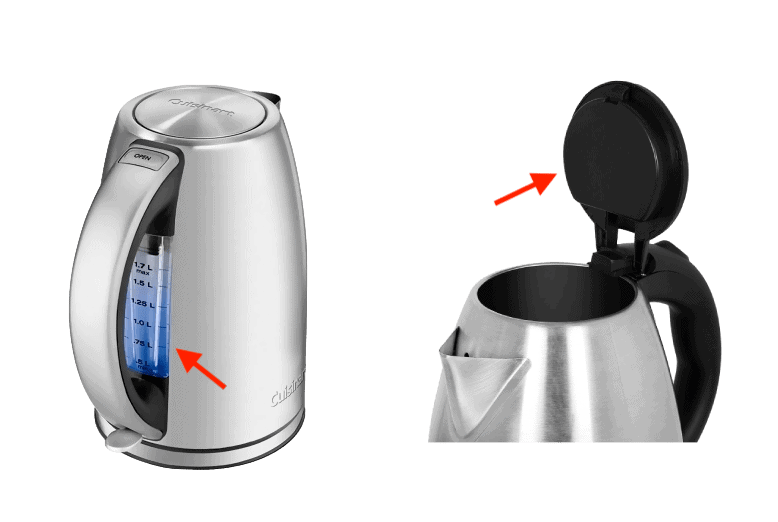
Cool to Touch Exterior
A key consideration for electric kettles is the outer surface’s ability to resist heat, ensuring users’ comfort and safety while handling the kettle. This is achieved through double-wall construction, where the inner wall holds the boiling water, and the outer wall stays cool by trapping heat between the layers.
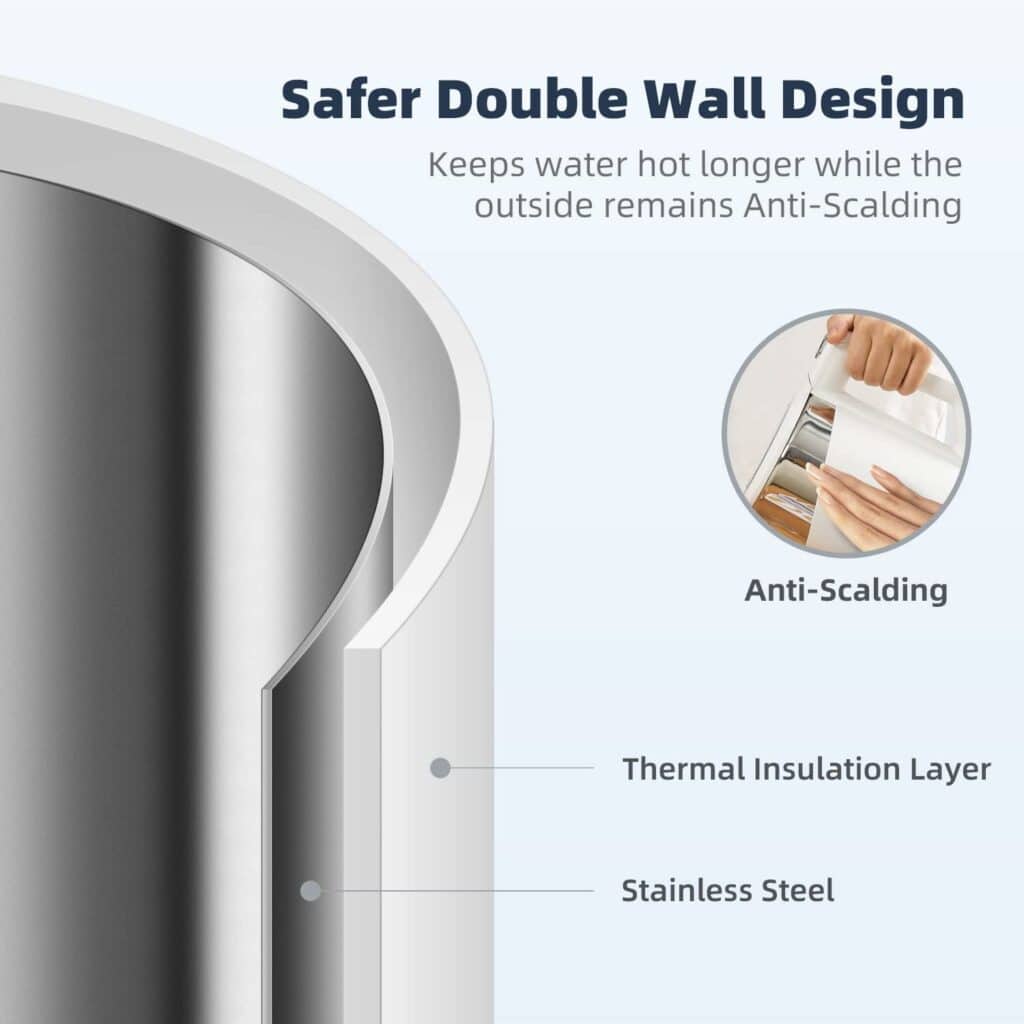
Auto Shut-Off and Boil-Dry Protection
These safety features automatically turn off the kettle when the water has boiled or if there’s no water inside, preventing damage and accidents.
Choosing the Right Wattage
When selecting an electric kettle, consider where you plan to use your electric kettle, whether it’s in your kitchen or by your bedside. Not all outlets in your home may support high wattages. Plugging a high-wattage kettle into a lower-capacity outlet can overload it, causing tripped breakers, appliance damage, or even fire hazards.
To prevent these, match your kettle’s power requirements with the capacity of the outlets and circuits. Electric kettles come in various wattages, from 500 to 3000 watts, so select one that suits your needs and convenience.
EASY MAINTENANCE
Electric kettles require regular maintenance to ensure hygiene and efficiency. Factors that simplify maintenance help keep the appliance clean, functioning well, and safe to use with minimal effort. Here are two key considerations for easy maintenance:
Unibody Interior
Consider selecting an electric kettle featuring a unibody seamless interior. This design ensures the kettle is made from a single piece of material, minimizing the risk of dust buildup in joints. Consequently, cleaning and maintenance become simpler.
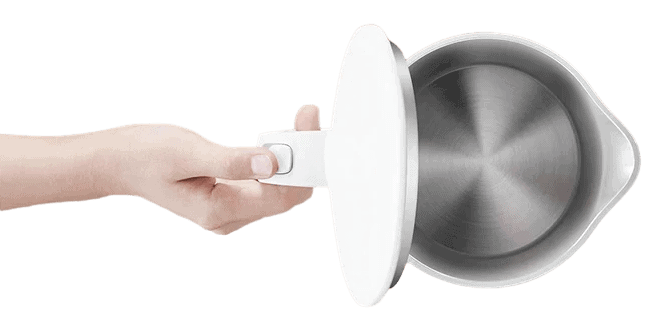
Furthermore, the unibody design eliminates the necessity for adhesives, particularly crucial in electric glass kettles where the stainless steel bottom heating plate must be attached to the glass body, potentially preventing the release of harmful chemicals into your drinks.
Wide Mouth Opening
Ensure the electric kettle’s lid has a wide opening, allowing easy access to the bottom. Scale build-up tends to accumulate on the heating element and inside the kettle over time. With a wide-mouthed lid, cleaning these deposits becomes effortless, simplifying maintenance.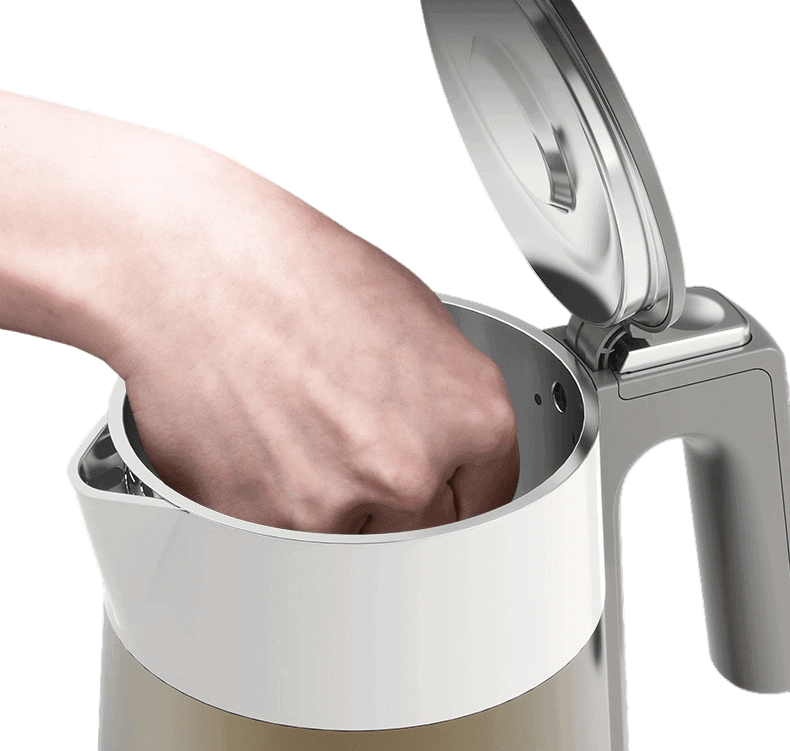
Miscellaneous Considerations
Electric kettles on the market often offer a range of additional features to enhance the user experience. Below are some factors to consider based on your preferences:
- LED indicator: LED indicator lights in electric kettles signal when the appliance is heating water, providing a convenient visual cue for users. They illuminate when the kettle is turned on and turn off when the water reaches the desired temperature, enhancing safety and user experience.
- Removable Mesh Filter: A removable mesh filter in electric kettles strains impurities like limescale, ensuring cleaner water for beverages.
- Rapid Boil: Fast boiling times are highly sought after, as they save time, especially in the morning or during busy periods.
- Temperature Control: Adjustable temperature settings are ideal for tea and coffee enthusiasts, as different beverages require specific temperatures for optimal taste. Some models also feature a real-time water temperature display.
- Keep Warm Function: This feature maintains the water at a desired temperature for a set period, which is convenient for those who want multiple cups over time.
- Quiet Boil: Designed to minimize noise during operation, making it quieter than standard models.
- Smart Features: Some advanced models offer Bluetooth or Wi-Fi connectivity, enabling remote control via smartphone apps for added convenience and versatility.
Overall, a well-informed decision ensures a reliable, safe, and enjoyable kettle for everyday use.